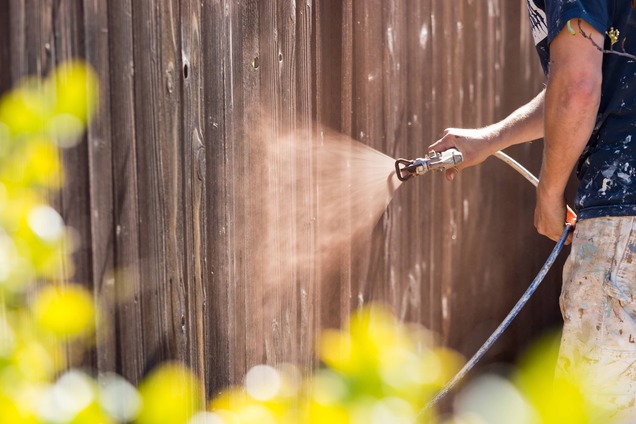Why You Should Stain and Seal Your Fence This Summer
Summer brings more than just sunshine, allowing everyone to enjoy the outdoors. It also carries moisture and other elements that can increase your fence’s exposure to climate conditions.
For this reason, it is essential to stain and seal a wood fence, keeping it structurally sound, pest free, and aesthetically appealing.
Why You Should Stain and Seal a Fence
Cleaning, staining, and sealing a wood fence brings several key benefits. It is important to note that taking proactive measures to address potential problems promptly extends the lifespan of your wooden fence. Here are some of the benefits of sealing fence sections:
1. Improves Overall Aesthetics
When you stain and seal a wood fence, it improves the overall aesthetic appeal of your fence, which boosts your property’s curb appeal. The stain can penetrate the wood and naturally highlight its natural grain. It gives your fence a down-to-earth finish elevating its visual appeal and potentially boosting your property’s value.
2. Protection Against Ultraviolet Damage
Sealing wood fence sections protects from harmful UV rays, which can cause the exterior to fade. UV radiation can also cause wood fibers to break down, reducing their usable life. The pigments from wood stains reflect the UV rays, preserving the color and appeal of your fence.
3. Prevent Rot and Insect Infestation
Wooden fences can still be exposed to moisture, followed by intense summer heat, which degrades the condition of the wood. This exposure can lead to wood decay, rot, mold, and mildew growth. When you stain and seal a wood fence, you create a barrier, preventing moisture from seeping into wood fibers.
Sealing a wood fence reduces the likelihood of these problems and helps to preserve its structural integrity. Further, you can apply certain stains as an insect deterrent. When you stain and seal a fence, you prevent termites, ants, and other insects from settling in the wood. Infestations can weaken your fence’s structure over time.
4. Increase Your Fence’s Lifespan
When you stain and seal a fence, you extend its usable life. According to the U.S. Department of Agriculture (USDA), a wooden fence can last up to 14 to 20 years on average.
However, if you use pressure-treated wood and provide the necessary maintenance, such as sealing fence structures, you can extend its usable life from 50 to 60 years.
Should You Stain or Seal?
The choice of sealing or staining your wood fence depends on your needs. Both options will prolong the lifespan of your wooden enclosure. However, if maintaining the fence’s structural integrity is more important for you, then you should prioritize sealing wood fence structures.
However, if you want to improve your fence’s aesthetics, consider applying a suitable stain on the wood. The good news is that you can always do both during regular maintenance.
It is important to note that both these processes can be applied to your fence, renewing its colorful exterior while strengthening the posts, rails, pickets, and other wooden structures.
When to Stain and Seal Wooden Fences?
Given certain conditions, the best time to seal and stain wooden fences will vary. If you install a new fence for your home, it is best to wait four to eight weeks after installation before applying any stain or sealant.
This amount of time will allow the wood to reduce its moisture content, allowing it to absorb the seal and stain better. However, if you used pressure-treated lumber for your fence, you will have to wait longer since drying takes a bit longer.
Applying a stain and seal during early summer when the wood’s pores aren’t saturated is best. However, avoid using these products on your wooden fence in full sun.
The high summer temperatures can cause stains and seals to evaporate too quickly. This condition can prevent the wood from absorbing the dye and seal so it doesn’t penetrate the fibers deeply, reducing the overall effectiveness of these products.
Stain and Sealing Tips
Here are a few more useful tips for proper application:
- Ensure the wood surface and air temperature are between 50 to 90 degrees Fahrenheit. This is the optimal temperature range to ensure the wood can absorb as much of the stain and seal.
- Ensure that you have rain-free weather for at least 48 hours. If it rains within a day after you apply a stain or seal, the process can get ruined.
- Do not apply seals or stains when the wood is under direct sunlight.
Trust Fence Specialists to Boost Your Home’s Curb Appeal
You can contact specialists from As Good As New LLC if you need help staining and sealing your wooden fence. Our team offers turnkey solutions to preserve the service life of your fence and restore its aesthetic appeal. Contact us today by filling out this form, and our specialists will happily answer your questions.








